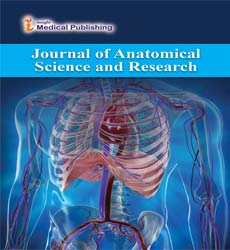Brief Note on Hypothalamus
Jinzhisa Zhangu*
1Department of Biological Science, University of Tsinghua, China
- *Corresponding Author:
- Jinzhisa Zhangu
Department of Biological Science, University of Tsinghua, China Tel: 1913810628; E-mail: zhangjzsau@zju.edu.cn
E-mail:
Received Date: June 24, 2021; Accepted Date: July 08, 2021; Published Date: July 15, 2021
Citation: Zhangu J (2021) Brief Note on Hypothalamus. J Anat Sci Res Vol. 4 No.3:e001.
Editorial Note
The hypothalamus is a part of the mind that contains various little cores with an assortment of capacities. Quite possibly the main elements of the nerve center is to connect the sensory system to the endocrine framework through the pituitary organ. The nerve center is situated beneath the thalamus and is essential for the limbic framework. In the wording of neuroanatomy, it frames the ventral piece of the diencephalon. All vertebrate cerebrums contain a nerve center. In people, it is the size of an almond.
The hypothalamus is liable for the guideline of certain metabolic cycles and different exercises of the autonomic sensory system. It orchestrates and secretes certain neurohormones, called delivering chemicals or hypothalamic chemicals, and these thusly animate or restrain the discharge of chemicals from the pituitary organ. The nerve center controls internal heat level, hunger, significant parts of nurturing and connection practices, thirst, exhaustion, rest, and circadian rhythms.
The hypothalamus is isolated into 3 locales (supraoptic, tuberal, mammillary) in a parasagittal plane, showing area foremost back; and 3 regions (periventricular, average, sidelong) in the coronal plane, demonstrating area average parallel. Hypothalamic cores are situated inside these particular districts and regions. It is found in all vertebrate sensory systems. In vertebrates, magnocellular neurosecretory cells in the paraventricular core and the supraoptic core of the nerve center produce neurohypophysial chemicals, oxytocin and vasopressin. These chemicals are delivered into the blood in the back pituitary. A lot more modest parvocellular neurosecretory cells, neurons of the paraventricular core, discharge corticotropin- delivering chemical and different chemicals into the hypophyseal entry framework, where these chemicals diffuse to the foremost pituitary.
Further information: Lateral nerve center § Orexinergic projection framework, and Tuberomammillary core § Histaminergic outputsThe nerve center is exceptionally interconnected with different pieces of the focal sensory system, specifically the brainstem and its reticular arrangement. As a feature of the limbic framework, it has associations with other limbic designs including the amygdala and septum, and is additionally associated with spaces of the self-sufficient anxious system.The nerve center gets numerous contributions from the brainstem, the most remarkable from the core of the single lot, the locus coeruleus, and the ventrolateral medulla.Most nerve strands inside the nerve center disagreement two different ways (bidirectional).Projections to regions caudal to the nerve center go through the average forebrain group, the mammillotegmental parcel and the dorsal longitudinal fasciculus. Projections to regions rostral to the nerve center are conveyed by the mammillothalamic plot, the fornix and terminal stria.Projections to spaces of the thoughtful engine framework (sidelong horn spinal portions T1-L2/L3) are conveyed by the hypothalamospinal lot and they initiate the thoughtful engine pathway.
Open Access Journals
- Aquaculture & Veterinary Science
- Chemistry & Chemical Sciences
- Clinical Sciences
- Engineering
- General Science
- Genetics & Molecular Biology
- Health Care & Nursing
- Immunology & Microbiology
- Materials Science
- Mathematics & Physics
- Medical Sciences
- Neurology & Psychiatry
- Oncology & Cancer Science
- Pharmaceutical Sciences
